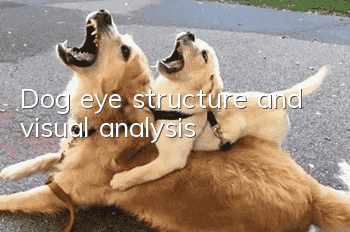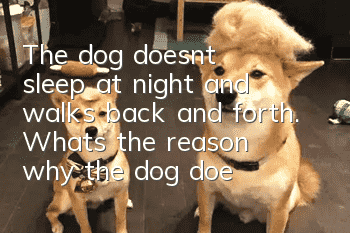Dog eye structure and visual analysis

Like humans, dogs’ eyeballs are similar to spheres, located in the orbit and connected to the brain by the optic nerve. The eyeball is composed of the outer wall of the ball and the inner contents of the eyeball. Specifically, they include the cornea, sclera, iris, ciliary body, choroid, retina, optic nerve, lens and vitreous body.
The structure of the eyeball is similar to that of a camera, but its function is much more precise and precise. The eyeballs can feel countless stimuli in an instant and can quickly transform them into a series of visual signals.
Dog Vision
In the dark, dogs can see better than people. This is partly because the dog's retina has a large number of visual stem cells that are sensitive to low light, and partly because there is a "transparent blanket" behind the visual stem cells that can reflect the concentrated light back. Wild dogs that may hunt in low light can be of great help. Dogs are particularly sensitive to distant moving targets and relatively slow to static targets, which helps with hunting, but also makes some dogs appear clumsy.
A dog’s vision
The dog's eyes are positioned on the head and are accompanied by muscles that allow the eyeballs to rotate flexibly, which gives the dog a fairly wide field of vision. The difference in the shape of a dog's head determines the difference in eye position, and also results in differences in visual field between different dog species. Generally speaking, brachycephalic (short-nosed) dogs, such as Pekingese and Bulldogs, have their eyes in the front of their heads, which gives them a better visual field overlap than long-nosed dogs.
The eyes of dolichocephalic (long-nosed) dog breeds are tilted, and the overlapping area of field of view is small. Except for a small area directly in front, long-nosed dogs can hardly form a three-dimensional image in most of the field of view. This may be why some excellent sighthounds (such as Russian Shepherds and Salukis) fall into ditches or stumble over small obstacles when charging at full speed. For humans, the fields of view of the two eyes overlap significantly, so we can see stereoscopic images and have accurate estimates of depth and distance. Although dogs have a wide field of vision, their judgment of distance is inaccurate.
- How to treat urinary tract stones in dogs? Dogs may need surgery!
- What should I do if my dog has no milk? The owner should check quickly and don’t let the puppies starve to death.
- Dog’s anal gland odor, please note that this is a sign of your dog’s health!
- How to make your dog like to eat dog food Four ways to make your dog fall in love with dog food
- Can dogs digest peach pits if they eat them? Can dogs digest peach pits if they accidentally eat them?
- How to protect your dog’s food? Teach you tips on training your dog
- Why do dogs defecate everywhere? How can dogs stop defecating everywhere?
- What should I do if my dog has lupus? Immune system diseases should not be underestimated
- If your dog's hair is cut and the skin is cut, the flesh is exposed. If the dog's hair is accidentally cut and the skin is cut, it must be disinfected immediately.
- Do dogs need deworming in summer? What should you pay attention to when raising dogs in summer?



